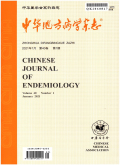摘要氟的主要靶器官是骨相组织,临床表现为氟斑牙和氟骨症.其中,氟骨症发病机制不清且尚无特异的治疗手段,对人体健康危害较大.研究表明,氟对骨细胞调控的分子机制涉及较多信号通路蛋白和功能基因的异常改变,然而氟对这些信号蛋白和功能基因的调节机制仍不清楚.微小RNA(miRNA)是一类具有调节mRNA转录和蛋白表达功能的非编码RNA,在细胞的生长发育和分化中具有非常重要的作用.近年研究发现,miRNA与骨代谢调节密切相关,它在骨细胞的分化、生长和生物学活性等方面均具有调节作用.本文旨在探讨miRNA在氟骨症发病机制中可能发挥的作用,为氟中毒发病机制的深入研究提供新的思路和线索.
更多相关知识
abstractsBone tissue is the main target organ of fluorosis,Dental fluorosis and skeletal fluorosis are main symptoms of fluorosis.Skeletal fluorosis is one of the most serious damage to human health.However,no specific treatment therapies are available against skeletal fluorosis of which the pathogenesis is still unclear.Studies have shown that signaling pathway and gene function are important molecular systems which has a close link with osteocyte damage caused by fluorosis.However,how fluoride regulates these related proteins and genes remains unclear.MicroRNAs (miRNAs) are non-coding RNA molecules that regulate mRNA transcription and protein expression in the process of cell growth and differentiation.Recent studies have shown that miRNAs are closely associated with bone metabolism,miRNAs have an important regulatory role in osteocyte differentiation,growth and biological function.The objective of this article is to explore the possible roles of miRNA in the pathogenesis of skeletal fluorosis,and provide new ideas and clues for further study of the pathogenesis of fluorosis.
More相关知识
- 浏览121
- 被引10
- 下载32


相似文献
- 中文期刊
- 外文期刊
- 学位论文
- 会议论文



 换一批
换一批 换一批
换一批



